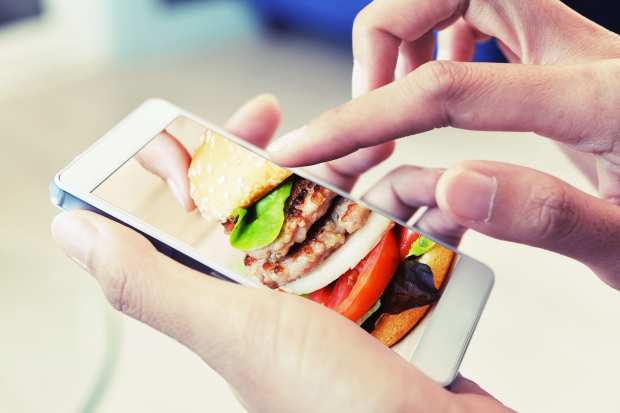The Mobile Order-Ahead Craving Is Insatiable

Ever imagine that people would be ordering airline food, for pickup or delivery, to enjoy at home? Sounds like late-night comedy, but it’s actually one of the more fascinating projects underway in the mobile order-ahead sector. That plan involves Malaysian carrier AirAsia opening a restaurant to serve its famously tasty in-flight meals. AirAsia intends to open up to 100 locations in the near future, and is developing its own mobile order-ahead app.
The latest PYMNTS Mobile Order-Ahead Tracker®, a Kount collaboration, is filled with these stories of innovation across the space. It’s a complex landscape with tremendous potential — and way to go to true ubiquity. According to the January 2020 Mobile Order-Ahead Tracker® 42 percent of smartphone owners use devices to search out eateries, scan menus and look for coupons. But only 32 percent order via phone apps, and fewer still (28 percent) pay with them.
This has nothing to do with yummy food items and everything to do with fraud fears. Nearly two-thirds of restaurant customers polled said that ordering and paying with mobile apps makes them nervous, with almost half of respondents primarily afraid of card number theft.
As expected, solution providers are sharpening their kitchen knives, balancing business needs of quick service restaurants (QSRs) with the fact that half of consumers recently surveyed said they’re more impatient with friction caused by anti-fraud methods than they were a year ago.
Food Fight
QSRs and fast casual restaurants have championed mobile order ahead (MOA) and, as uncovered in the January Mobile Order-Ahead Tracker®, it can have a transformative effect.
The learnings and revelations from MOA data alone are striking, hinting at new possibilities as the technology improves and usage grows. For example, who but a lucky few would have known that cauliflower crust pizza is so good? Grubhub noted a 650 percent rise in demand for the cabbage-based delicacy from 2018 to 2019. Can orders for broccoli cake be far behind?
The thing that skyrocketed in popularity along with cauliflower crust pizza was fraud in the food and beverage space: it rose nearly 80 percent in more or less the same timeframe. Coupon fraud is a prime form of MOA crime, costing QSRs up to $600 million in lost revenue annually.
Understand that coupons remain one of the most reliable promotional tactics in food marketing. Roughly half of men and women cite coupons as the main reason they eat at new places, making them irresistible to both foodies and fraudsters. But the industry isn’t just swallowing the insult. Watchdogs like The Coupon Information Corporation keep a running tally of abuses, and mobile/digital coupon solutions are proliferating to defeat the cheats.
Cooking with AI
Major players in mobile order-ahead want to feed everyone. One MOA trailblazer, Domino’s, is in the top three on our monthly MOA Provider Rankings index, with one of the first and most robust mobile ordering apps in the field. The pizza giant is expanding its app functionality supporting voice-enabled ordering for Amazon and Google devices, plus its friendly artificial intelligence (AI) chatbot.
Considering that over two-thirds of Domino’s orders are digital, it’s easy to see why they remain laser-focused on the mobile experience. Domino’s vice president of global eCommerce and digital marketing, Christopher Thomas-Moore, recently told PYMNTS, “It’s critical to our development plan, how the customers are actually responding. We test everything here … to understand the true lift and impact on the business that [mobile app] features have.”
“That lift comes by the vote of our customers and the reactions that they have when they’re in our eCommerce environment,” Thomas-Moore said.
